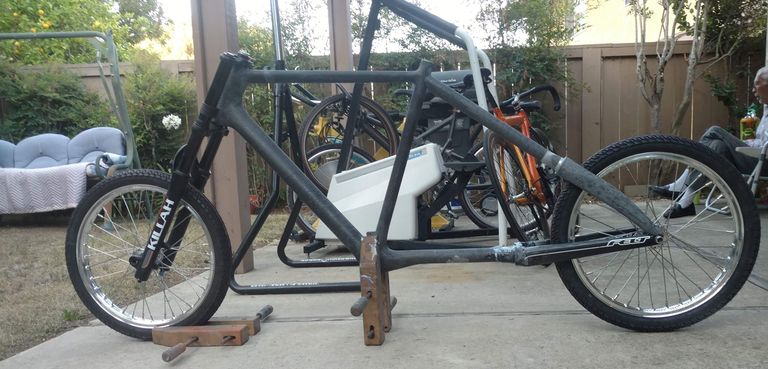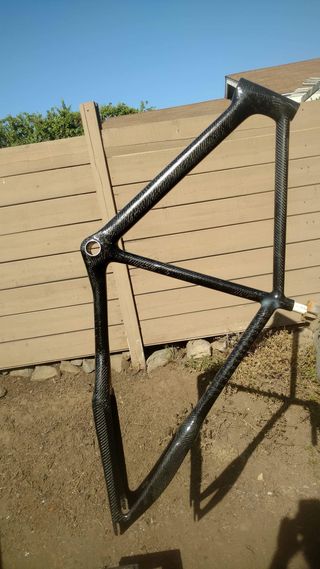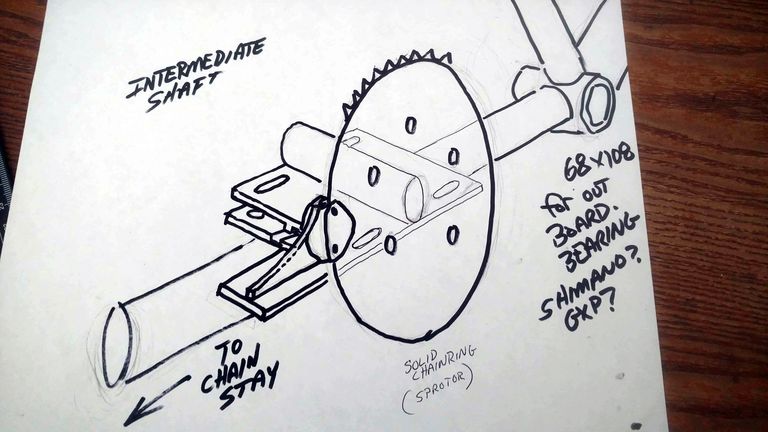How They Built The Fastest Bicycle On Earth
A look at the bike that broke the motor-paced bicycle land speed record, at a shade under 300km/h.
In 2018, Denise Mueller-Korenek became the fastest cyclist in the world, pushing her custom rig to nearly 300km/h on the famed Bonneville Salt Flats in Utah.
Feats like being the fastest in the world take extraordinary effort and training. And in Mueller-Korenek’s case, it also required an extraordinary bike—one stable enough to stay upright at those speeds, with a tyre strong enough to roll that fast, and a gear large enough to accelerate faster than any human has ever pedalled a bike.
The Fastest Tyre
Mueller’s KHS bike was built by two San Diego engineers: Len Lochmiller and Chris Garcia. But thefastest bike on earth bike didn’t start with the frame, as it would with most traditional builds. Given the stresses and challenges that come with rolling at 296.13km/h, the engineers started their project with another critical component: the tyre.
This combination yielded the equivalent of a 204×11 road gear without the need for a chainring that would have scraped the ground.
They started from scratch designing a bike around a tyre that they thought could handle her incredible speed. Garcia told us that the tyre, which is an IRC model designed for dragster scooters in Thailand, was shaved down to make sure it was perfectly round to prevent speed wobble. Garcia picked this model as it was simply the strongest and most trustworthy tyre they could use. Mueller used an inner tube rather than tubeless technology as that was what the tyres were designed around.
Surprisingly Small Wheels
Chris Garcia told us the wheels were designed around the fastest, safest tyres they could source, and the bike around the wheels. In order to accommodate the tyres, he used 17-inch 1970s Akront motorcycle rims laced with 12-gauge Phil Wood spokes to Profile Design hubs modified by Garcia to take the larger spokes. The bike ran a 15mm front thru-axle and a 135mm rear fixed hub, and the rims were perfectly balanced to avoid any extra instability at speed.

A Special (and Highly Unusual) Frame
Lochmiller put a lot of thought into the frame, which he built from scratch using his experience in both bicycle and automotive design. He needed to build a bike that was stable at high speeds and able to handle the special 17-inch wheels and accommodate the gearing required to go 296km/h.
READ MORE The Fastest Bikes Of The Tour De France
Lochmiller made the rear triangle from two Cannondale road forks joined together at the dropouts to yield a longer and stiffer rear end to accommodate the gearing and high speeds.

The top and down tubes were made using a process Lochmiller cleverly designed himself. Carbon was wrapped around a fluorescent light bulb and then a special durable plastic bag was placed around the tube and the air sucked out by an industrial vacuum to form the carbon into the tube shape. Once this was set, the bulb was then smashed and removed, yielding a cylindrical tube much thicker than any road frame. Lochmiller says that he then wrapped the tube with extra carbon, which he thinks “probably wasn’t necessary.” But given the extreme speeds, he said the extra layers help him sleep at night.
The Fastest Geometry
The geometry of the bike was based on one used by Dutch professional cyclist Fred Rompelberg to set a record of 267km/h in 1995. Rompelberg encouraged her efforts and allowed her to use as a pace car the same custom 1 000-horsepower (750 kW) dragster he had used in setting the record. The pace car was driven by professional race car driver Shea Holbrook. The bike was more than 16kg and 2m long, but weight isn’t an issue on the pan-flat surface used for the record, and the length adds stability at such high speeds. The chain stays and seat stays were so long that they required a brace halfway down to stop any flex.
A HUGE Gear
Lochmiller then used a custom-engineered mount for a reduction gear that allowed a reasonable cadence at such high speeds. Mueller used a 60-tooth front chainring going to a 13-tooth cog on a Jackshaft that was supplied by da Vinci. The Jackshaft transferred to another 60-tooth chainring going to a 12-tooth cog on the rear wheel. This combination yielded the equivalent of a 204×11 road gear without the need for a chainring that would have scraped the ground, which would have been the case with a traditional chainring-cog drivetrain! This top gear was more than four times larger than the 52×11, which is the biggest gear on a standard road bike.

Other Gear
Mueller used an X-Fusion downhill fork, reduced to 40mm of travel in order to smooth out the rough terrain of the salt flats where she made her record attempt. In previous attempts to be the all-time fastest (she set the women’s record in 2016) she had a brake on the chainring as well as on the rear rim, but she felt that she didn’t really need brakes and this year went with only a rear rim brake as a safety measure. Mueller also used a suspension seatpost to soak up some of the vibrations of riding at more than double the speed limit.
To be the fastest cyclist on the planet takes planning, strength, determination and a very special bicycle.
READ MORE ON: fastest bike speed record Women in Cycling

